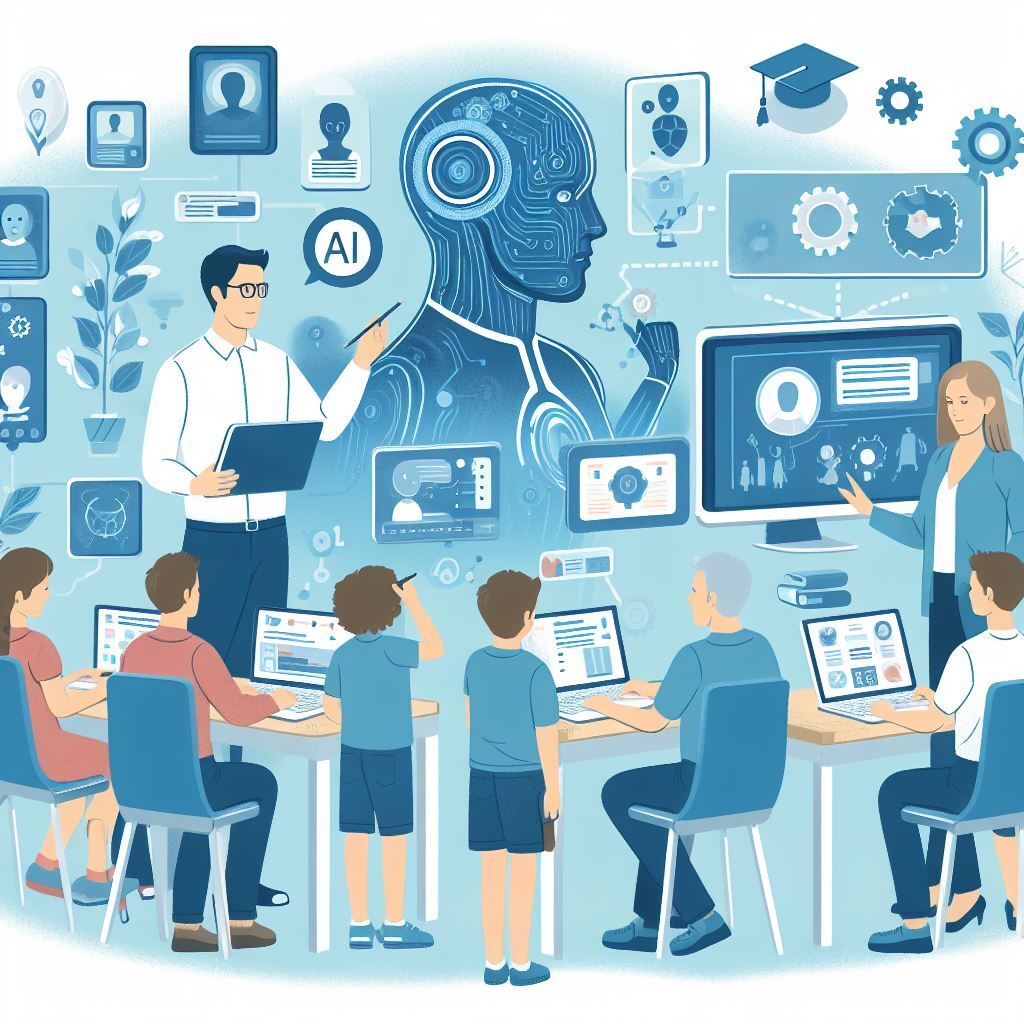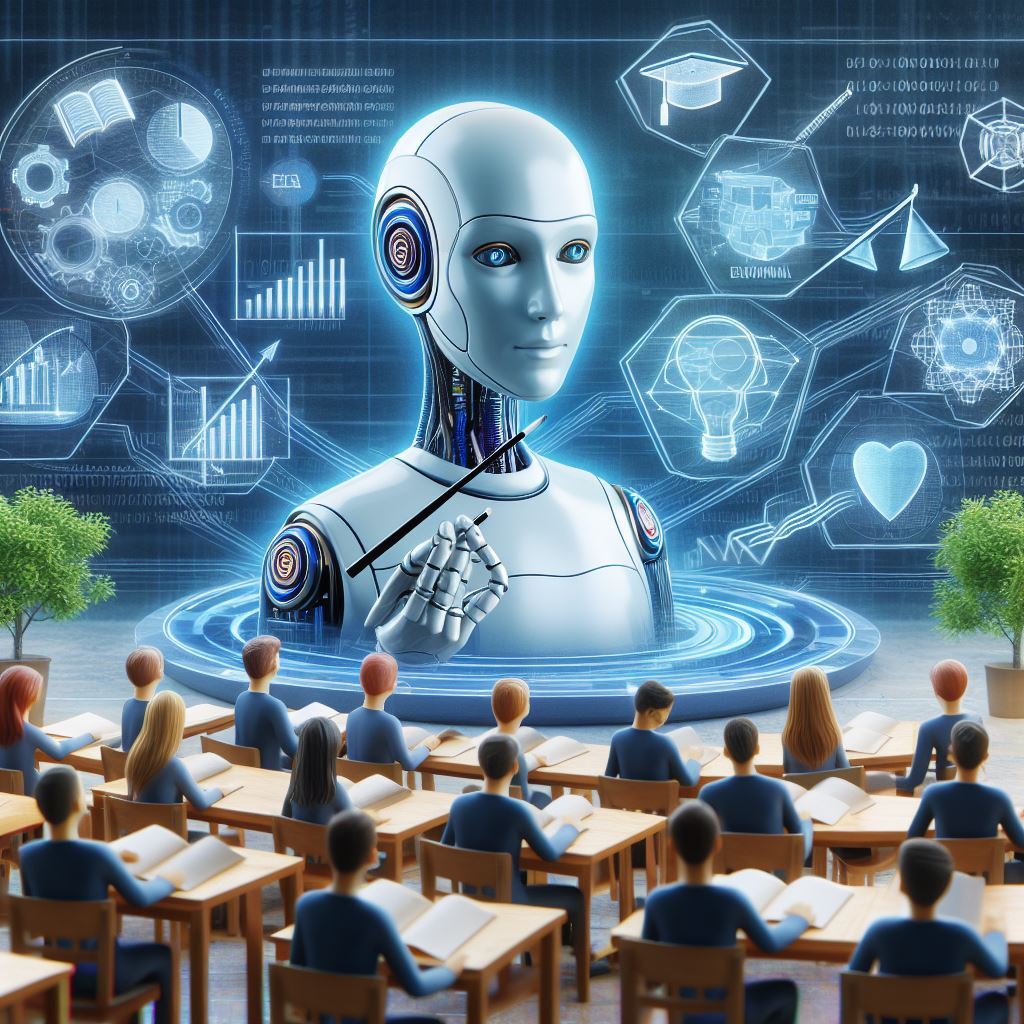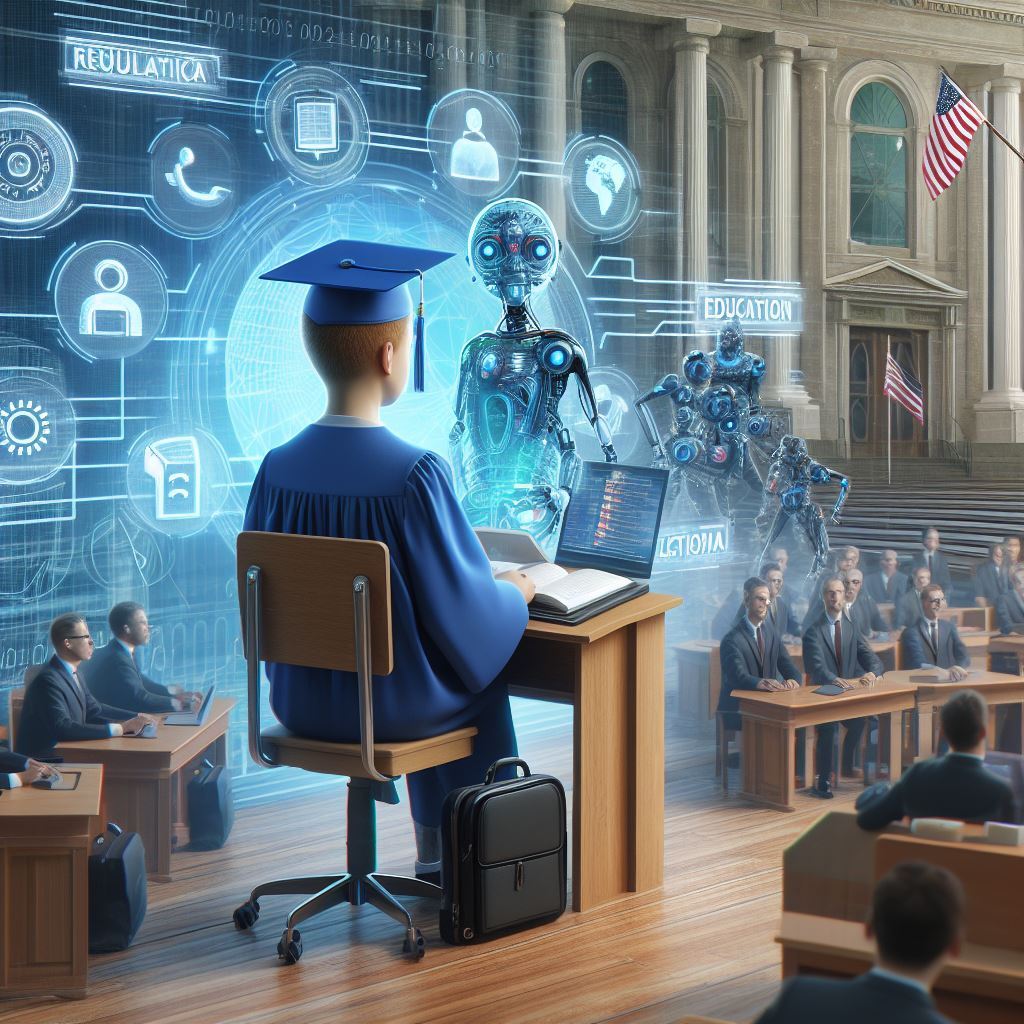Understanding AI in Substitute Teaching
The Future or Folly?
Can an AI system truly act as a substitute teacher? It’s a tricky question. Teaching isn’t just about bestowing knowledge but also building skills, forging character, and creating a learning environment complete with curiosity and discoveries.
The education field uses AI in three main ways: as a teaching partner, a grading assistant, and a substitute teacher. Each way has its pros and cons, resulting in unique challenges and opportunities.

Using AI as a Teaching Partner
AI can serve as a helpful tool under a teacher’s command, offering customised resources and insights to boost student learning. This method can increase teachers’ efficiency and effectiveness, allowing them to tailor lessons according to student progression. However, this demands teachers to be digitally savvy and adaptable.
Microsofts Co-Pilot introduces an innovative approach to granting students access to AI-driven knowledge and skills. With this tool, students can effortlessly generate both images and text based on AI prompts. Traditionally, crafting images demanded proficient artistic abilities or relied on purchasing stock imagery. However, with AI, students and educators alike can unleash their creativity, producing remarkable visuals in mere moments.
Co-Pilot serves as an invaluable asset in various educational settings. For instance, in an English class, students engaged in crafting imaginative tales can swiftly complement their narratives with corresponding imagery. Similarly, when studying specific animals, students can seamlessly generate images depicting these creatures in their desired settings, enriching their presentations or projects. This technology empowers learners to enhance their storytelling and research endeavors, fostering a more immersive and dynamic learning experience.

Deploying AI as a Grading Assistant
AI can help cut down the time spent on marking and grading, particularly for large student groups. This automation gives educators extra time to focus on designing the curriculum and interacting with students. But it could lack the human touch that’s essential in grading subjective assignments.
Grading assignments is a time-consuming task for teachers, particularly challenging for relief teachers who may not be familiar with the students. However, innovative tools like https://aigradingassistant.com/ have emerged to streamline this process significantly. These tools offer the invaluable advantage of swiftly identifying areas of concern in student work, enabling teachers to allocate their time and efforts more efficiently towards providing comprehensive feedback and guiding students through examples.
It’s important to note that while these tools can greatly enhance efficiency and effectiveness in grading, some schools may have policies restricting their use. Therefore, it’s advisable to verify with the school’s policy before incorporating such services into your grading workflow.

Employing AI as a Substitute Teacher
Can AI step into a substitute teacher’s shoes? Research professor Neil Selwyn doubts it, particularly when it comes to the engagement level of learning materials created by AI. Substitute teachers do more than supervise and share information. They offer context, use teaching skills, and respond to numerous human factors in real time. AI, as it presently stands, isn’t equipped to mimic empathy, humour, or spontaneity.
Undoubtedly, the future holds promising advancements in AI assistance for teachers. A notable example is the growing integration of AI within coding environments, which has seen significant progress in recent years. Tools such as github co-pilot and AI Assistant have become invaluable assets for programmers seeking to expedite development processes. By predicting and generating subsequent lines of code, these tools dramatically enhance efficiency, particularly benefiting novice programmers or those exploring new programming languages.
The advent of such assistants signifies a transformative shift not only in coding practices but also in various sectors, including education. As AI continues to evolve, its application in teaching and educational settings is poised to revolutionize learning experiences, offering tailored support and fostering greater proficiency among students and educators alike.
From what we see today, the notion of AI outrightly replacing teachers seems more imaginary than realistic. AI tools can certainly enhance teaching processes and student learning experiences, but they have yet to master the human elements of teaching. Plus, this raises ethical questions—should machines have such a critical role in moulding young minds?
Still, we must maintain an open conversation about AI’s place in the future of education. With advancing technology, AI’s role in teaching will remain a resonant and ever-changing topic for discussion.
The Ethical Landscape
Exploring the Moral Dilemmas in AI Teaching
When we talk about AI in education, we can’t ignore the ethical issues that come up. We have to think carefully about what it means to put our kids’ education into the hands of machines.
Think about a future where AI is a huge part of education. These AI systems would know a whole lot about how your child learns, their strengths, their weaknesses, and even how they’re feeling. But who gets to see all that information? Is it safe? What about privacy? These are big questions we have to answer. Especially since kids might not understand the risks around sharing their personal and biometric data.
Also, AI doesn’t “feel” like a person does. It can’t understand emotions, or relate to students on a personal level. There are parts of human interaction, like non-verbal communication, that AI just can’t grasp. Teachers help students grow personally and emotionally, not just academically. So we have to ask, can AI really be a substitute for that kind of support?
And we can’t forget about the impact on teachers. Research professor Neil Selwyn has made a valid point about the downsides of relying too much on AI in education. What happens to teachers’ jobs? Will they just be watching the AI do their work? These are serious moral questions we have to look at. They could have a big effect on our society and economy.
So, while AI might change the game for substitute teaching, it also opens up a can of worms when it comes to ethics. As we stand at the crossroads of this tech revolution, we need to carefully weigh the pros and cons. We have to make sure we’re using technology responsibly, not just because it’s new and exciting. We should always keep our focus on how best to help our future generation.
Policy and Practice
Regulatory Oversight in an AI-Driven Educational System

Are you curious about how we can control the use of artificial intelligence (AI) in education? It’s all about regulatory oversight. This means following rules to ensure tools such as AI are helping students, not harming them, and upholding our education standards. This regulation and standards body can also highlight any ethical concerns that may arise from AI use.
Curious to know what this regulatory oversight actually means?
Primarily, it involves establishing rules to prevent AI from replacing teachers in delicate areas like teaching about morality and ethics. It’s crucial to remember that AI is just a tool. It can boost teaching and learning, but it doesn’t have the human touch, emotional intelligence, and real-life experiences that teachers have. It can’t handle complex or sensitive situations like a human can.
A vital part of regulation is inspecting the algorithms behind AI tools. Regulators must ensure that these algorithms are transparent and fair. If they show signs of biased or unfair behaviour towards students, it might be time to step in and make changes.
AI would be a great addition to education, but relying too much on it could eliminate the human touch in the teaching and learning process. Regulations need to prevent this by striking a balance between technology and human interaction.
Another critical role for an AI-education regulator is to protect students’ data. Using AI tools would mean collecting a lot of data about students, like how they learn, their strengths, and their weaknesses. Sturdy rules need to be put in place to ensure this data is used properly and kept confidential.
In conclusion, although AI has the power to transform teaching, we must have strict regulatory oversight to make sure AI tools enhance student learning responsibly and effectively.
Predicted Impact on Students
AI Teachers vs Human Educators

AI offers countless possibilities in education. Highly developed AI can offer personalized instruction, adapting how and at what pace it teaches to match each student’s needs. This personalized approach can boost understanding and memory. Moreover, AI can provide instant feedback, enabling students to correct errors on the spot. AI is undeniably a game-changer in education.
Does this mean AI will soon replace human teachers? Not quite. AI can be an extremely effective tool for teachers. AI can dramatically enhance education and aid teachers by taking over routine tasks. With these tasks taken care of, teachers have more time for valuable one-on-one interaction with students. This beneficial synergy between AI tools and teaching methods may well be the answer to many of education’s current challenges.
However, it’s important to acknowledge what AI can’t do. Regardless of how sophisticated, AI can’t replace the emotional connection a human teacher brings to the classroom. The compassion, the physical presence, the encouraging gestures, and the human interactions – these are things AI can’t replicate yet. Therefore, the human element in teaching remains irreplaceable.
In short, while AI teachers may not replace human educators, a combined approach that harnesses the strengths of both could offer the best learning environment for students. Imagine a smooth alliance of AI boosting efficiency, while human educators provide the necessary emotional support for learning. Future of education seems thrilling!
Unpacking the Potential
Can AI Really Substitute Teachers?
Picture this – you walk into an 8th grade classroom and instead of your regular teacher, a virtual version of Ada Lovelace is teaching! Thanks to the magic of Artificial Intelligence technology, this isn’t some far-fetched dream but a possible reality. But how would this work? Well, let’s get into the details.
First off, in terms of speed and efficiency, AI easily beats us humans. It can handle lots of data super fast, which could lead to quicker feedback on assignments and customized problem-solving tools for each student. Just think – a teacher who can match each student’s learning pace in a larger class!
As for accuracy, AI-based teaching tools hit the mark perfectly. They stick to the teaching standards and deliver lessons consistently – no more, no less. For example, a class of 4th graders would get exactly 10 standard-grade questions on a chosen topic. This kind of precision can be tricky to achieve consistently with human teaching due to various factors.
But – using AI as substitute teachers also has its issues. For starters, there’s the concern about the missing human touch. Teaching isn’t just about passing on information. It’s also about nurturing social skills, recognizing feelings, and teaching students how to handle emotions, all of which are areas where AI currently lacks.
Then there’s another big concern brought up by many, including Prof Jim, a respected educator and AI expert. It’s about the ethics – how is data collected, stored, and used? What measures are set to keep students’ info private and secure? These questions need clear answers before we can fully welcome AI as teachers.
The Verdict
Opportunity or Threat?
The idea of AI taking on substitute teaching roles is certainly fascinating. While AI could help make education more efficient and individualized, we must also consider the potential lack of human connection and the ethical issues involved. It’s important that we continue to weigh these factors as we explore the use of AI in the field of education.

Conclusion
AI can make teaching, especially for substitute teachers, easier by helping with admin tasks and making learning more individual. But, even though AI is good at many things, it can’t give the human touch that’s so important in education. We should aim to use AI to help teachers, not to take their jobs, and find the right mix of technology and personal interaction. The future of education might see teachers and AI working together, but everyone, from policymakers to the general public, has a role to play in making sure these changes make education better.





